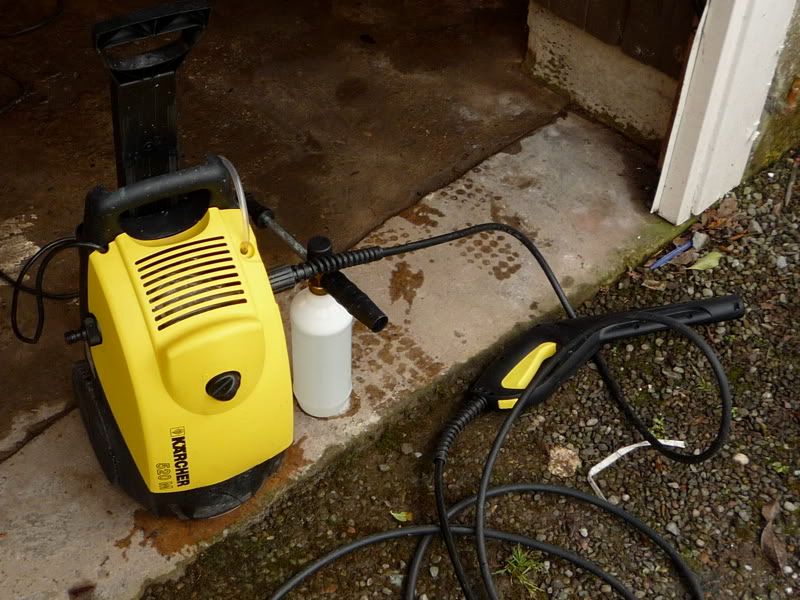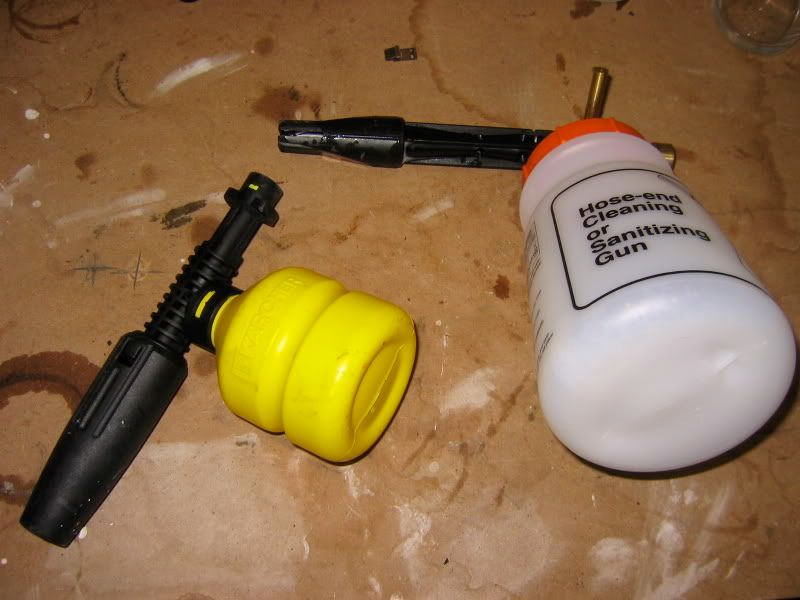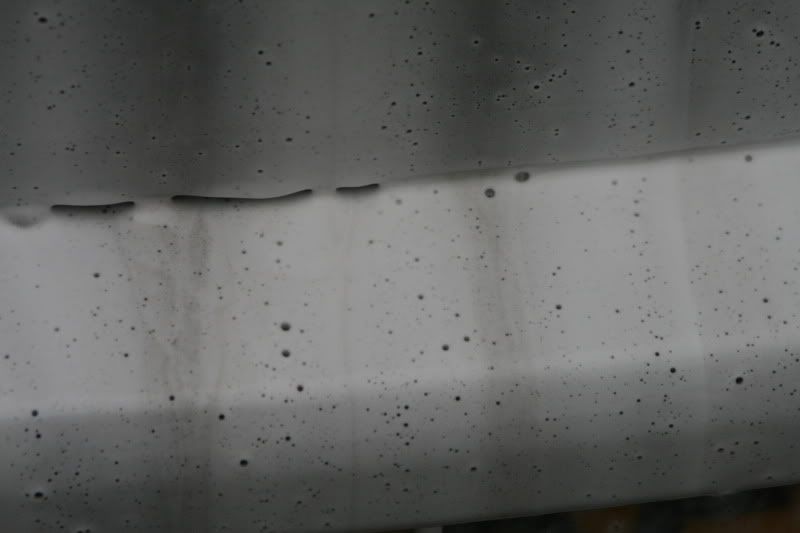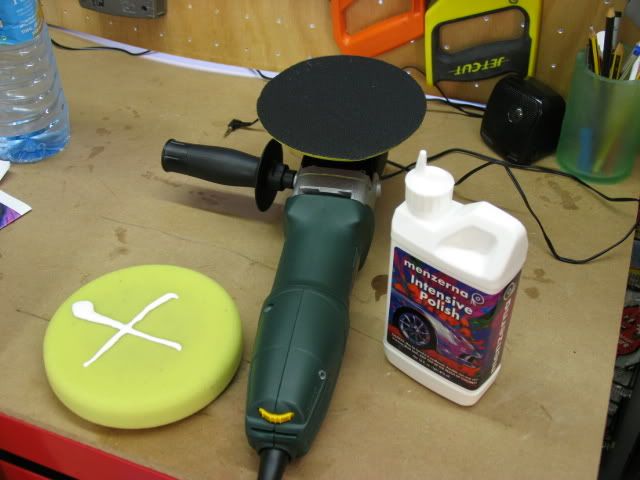What tools do I need to start detailing ?
Some of these items don’t require a blurb, however if you do wish guidance just leave a comment at the end of this post.
Pressure Washer, RCD for power, Rotary or/and, Dual Action, ,Wet and Dry Vac,Steam Cleaner, Measuring cup, empty spray bottles, jack and stand, long handle wheel brace, various power lighting, grit guards, extension cable, foam gun and at least 2 x buckets.
Ok, so now we have identified the defects on the car we have to now look at what equipment we need.
This post will take us through the tools we need to start detailing, the following posts will identify what products we need to actually begin the process.

Karcher pressure washer with foam lance
First on the list is a good quality pressure washer, these come in various sizes and powers, one of the best/most renowned pressure washers available is the kranzle. However, at the best part of £450.00 it is quite pricey especially if you are only using it once a week! There are very good “basic” pressure washers from manufacturers such as nilfisk and even Lidl and Aldi have good quality pressure washers available from time to time. The pressure washer I currently own came from the karcher outlet, it has an onboard detergent tank and can draw from a static water source. It is slightly larger so possibly not the best if you are tight for space. A good addition is an RCD.

Both the gilmour and karcher foam gun, good guns a lance is still a must

Shows the effectiveness of the foam lance, cold water used for this image.
While we are addressing Pressure washing, it is a good idea to discuss a foam gun, preferably one which attaches to your pressure washer. I happen to own both the Gilmour foam gun and the foam lance, very rarely do I use the Gilmour foam gun. A foam lance has so many uses, use it in winter to loosen/remove grit and sand before you perform your wash or use it in summer to remove pollen and general dust. What a foam lance allows you to do is remove the big stuff leading to a safer wash.
Now we have decided on the washing stage, another important tool is the wet and dry vac. It is best to go with a higher quality item at this stage, you want something reliable and with a good warranty. I personally opted for the George wet and dry because it has wet and dry facility but also has the ability to spray a detergent onto the floor mats, seats, hood etc. A top tip at this point is using the pressure washer on a lower setting to really shift the hard grime. Karcher also offer a good quality wet and dry, if this is purely a hobby then you may want to hire a wet and dry to start with and see if the purchase is really needed, many hobbyists simply use the vac from indoors.

My choice of weapon, the metabo
Machine wise we have to look at the Rotary or/and Dual Action. These are the two main tools you will use for the correction stage. The two main differences between these machines are the rotations. The rotary is a circular rotation and the dual action has a circular motion in addition to this it has an up, down, left and right motion.
The rotary is only a circular movement, this helps to build heat because the pad works the same area and with this heat it will level the paint faster.
However, there is a down side with this added heat there is more chance of burning or breaking through the clear. So long as you are careful, check the panel heat from time to time and make sure you have enough paint to “play” with.
Your typical dual action moving in various elliptical directions. This movement will not reach the same heat as the rotary so, the trade off is it can take quite a bit longer to level out - especially tough paint. However, this is a great tool to finish down as it will very rarely inflict any damage, sometimes the rotary can leave “traces” or very light surface defects itself even with a soft finishing pad and slow rpm.
Dependent on how “hard” the paint is, will also influence your decision. For instance, if you own something like a Honda which normally means the paint is quite soft then a DA (dual-action) will handle this quite adequately and will leave a high quality paint finish.
Further consideration is given to other factors such as; the vibration from a DA is considerably more than a rotary, a DA also has a higher Db (decibel) level, also a must have additional purchase is goggles and ear guards. Safety is always first and when dealing with product sling this a very good idea. However, a Rotary is more likely to burn/inflict further damage if in the wrong hands and a rotary is normally heavier. These are all factors which you have to take into consideration when choosing your machine, you will find that many detailers have both including myself. The reason being, personally I started on a DA and then moved to a rotary. All my glaze and wax applications are applied via the DA as I feel the glaze is worked into the paint and doesn’t dry as quickly.
Now we have covered what you need to perform the basic wash, polish and interior cleanse. A product which is a must have for correction is lighting. I will cover this in more depth within the “how to properly polish a car” edition. I will touch on a few options. One of them being a 3M sun gun, the main thing we look for is the K rating and angle of a bulb. Personally my favourite lighting is a 500w security light, this is a low level light which is ideal for either lower or upper panels.
Our next edition will cover “How to totally decontaminate your car”
No comments:
Post a Comment